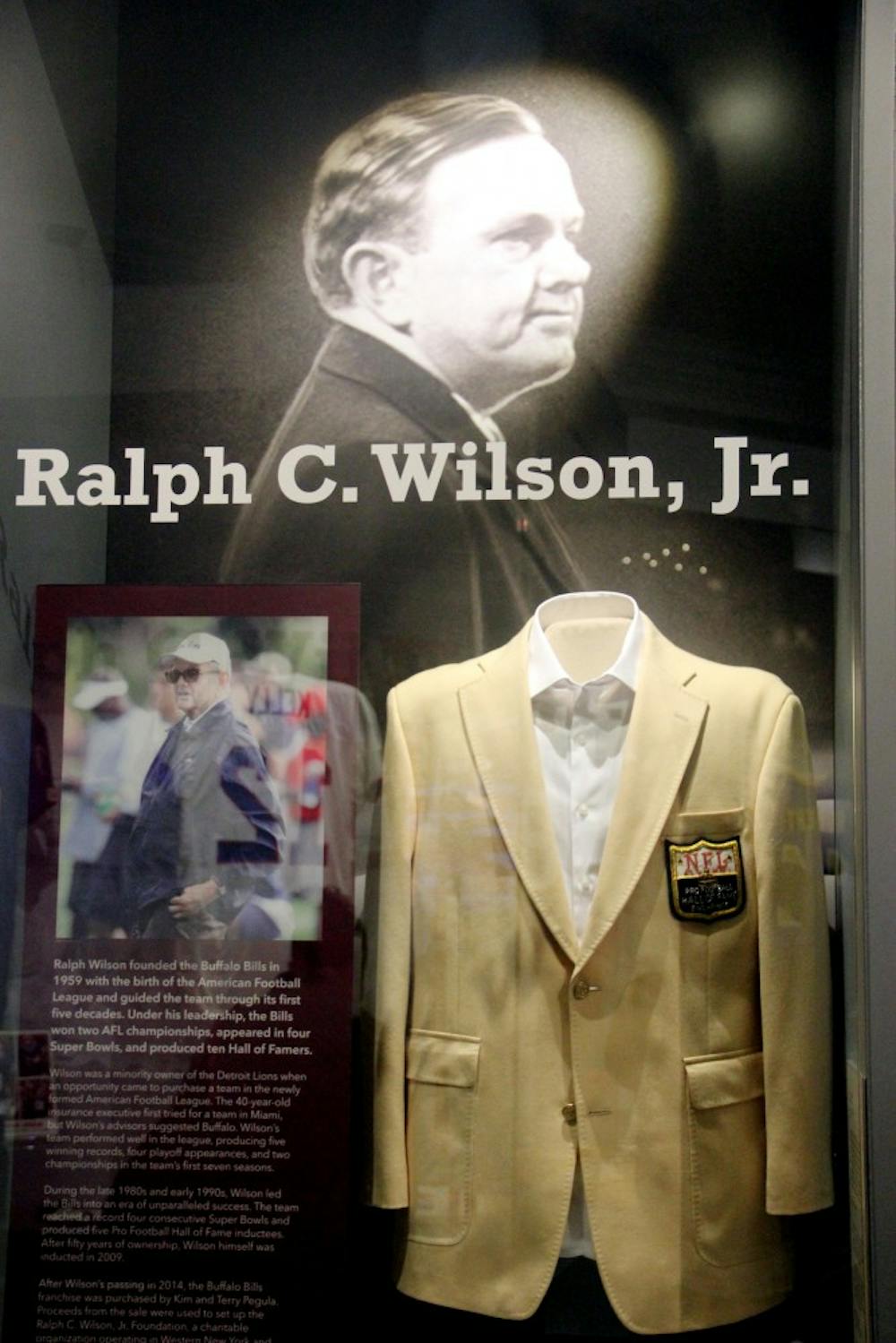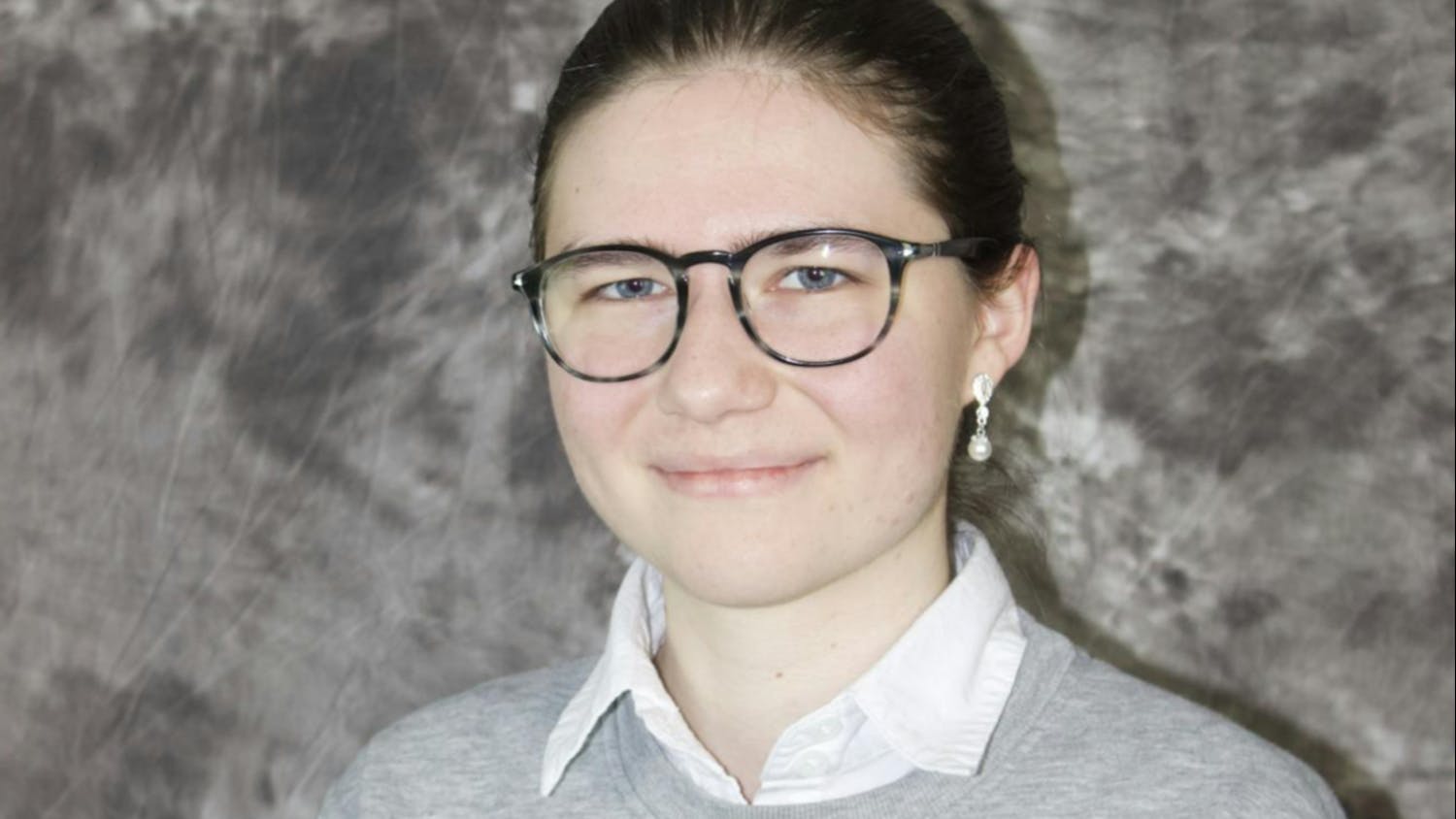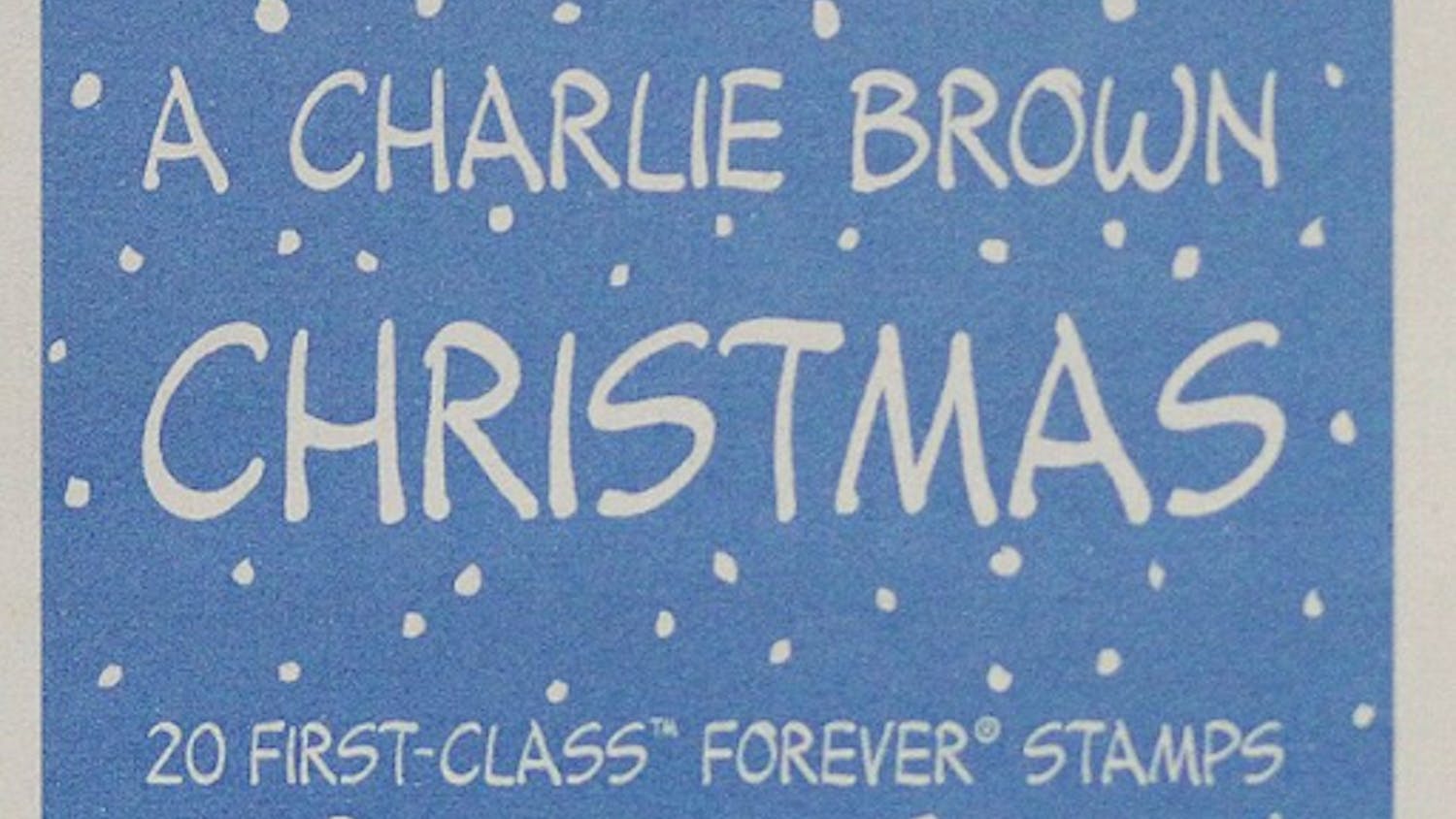Former Buffalo Bills player and Pro Football Hall of Fame running back Thurman Thomas spoke at the Buffalo History Museum Thursday. He debuted “Icons: The Makers and Moments of Buffalo Sports,” named “The Ralph C. Wilson, Jr. Gallery” due to a donation of $600,000 by the Wilson family. The gallery displays significant moments and athletes in Buffalo’s history.
Members and media gathered in the State Court room to listen to Thomas, along with President Steven McCarville, Executive Director Melissa Brown and Collection Manager Greg D. Tranter.
The gallery is the first step in the restoration of the museum. The museum is calling the capital project “Restore, Reactivate and Reconnect,” and is estimated to cost $1.43 million. The museum is being reconnected with Olmsted park as part of the plan.
The gallery, located on the second floor of the museum, contains an assortment of memorabilia. The Buffalo community donated 95 percent of the half million artifacts.
Artifacts include jerseys from the Buffalo Braves, –– the former NBA franchise that lasted from 1970-1978 –– O. J. Simpson autographed memorabilia and the Gold Hall of Fame jacket of Ralph C. Wilson, Jr.
“What we tried to do is really pick out the marquee objects. We didn’t want to put mass-produced items,” said Anthony Greco, director of visitor experience at Buffalo and Erie County Historical Society. “We wanted the one of one type things. … We really tried to pick and choose the most unique items you are not going to see anywhere else.”
The displayed items were chosen via a survey the museum put out to the community. The survey asked for the most iconic figures, moments and venues in Buffalo history. An overwhelming number of responses came back wanting Bills and Sabres artifacts.
“We live and die by the success and failures of our sports teams,” Greco said. “Your day can be that much better if the Bills or Sabers win. For whatever reason, Buffalo’s fan base is so connected to the team. I’m not going to say it is better or worse than any other city because there are a lot of great fan bases.”
Televisions display the sights and sounds of iconic moments throughout the museum. The infamous “Wide Right” kick from Super Bowl XXV is replayed on a screen, bringing back the emotions fans felt at the time.
“[Scott Norwood] missed the kick,” Greco said. “In other cities, he may have been rejected but when they [Bills] came back we had the parade in Niagara square and the crowd was chanting ‘We want Scott’ to applaud him. … We really care about our players here.”
Tranter is one of the collection’s major donors and a Bills fanatic.
Last year, he painfully but happily donated his entire collection of Bills memorabilia.
“When people see the artifacts, they light up and talk about something personal to them,” Tranter said. “I knew then that my collection belonged in Buffalo. To share it with the community and have part if it displayed in Icons is truly a dream come true for me.”
The impact of Tranter’s donations not only affects the community but Buffalo athletes as well.
“I’ve seen some of the stuff back there and [Tranter] really had to be on the road calling people and doing whatever it took to get some of those pieces,” Thomas said. “I’ve seen that Juicemobile. Even though I was born in Houston, I remember that. That’s probably the only one left.”
There are other sports highlighted throughout the gallery. Former NBA MVP Bob McAdoo’s jersey is displayed. The first African-American Bison player, Luke Easter, is honored and the gloves and trousers of the once-top boxing heavyweight contender in the world, Joe Mesi, can be seen. Greco believes the collection is important to teach this generation about the history of sports in the area.
“The people who are being born today or the past 15-20 years, … do they know our sports history?” Greco said. “We almost had a professional baseball team. We had a professional basketball team. The city was once much larger, and we can become that again. I think it offers hope to know what we were and what we can be.”
Jeremy Torres is the assistant sports editor and can be reached at jeremy.torres@ubspectrum.com





